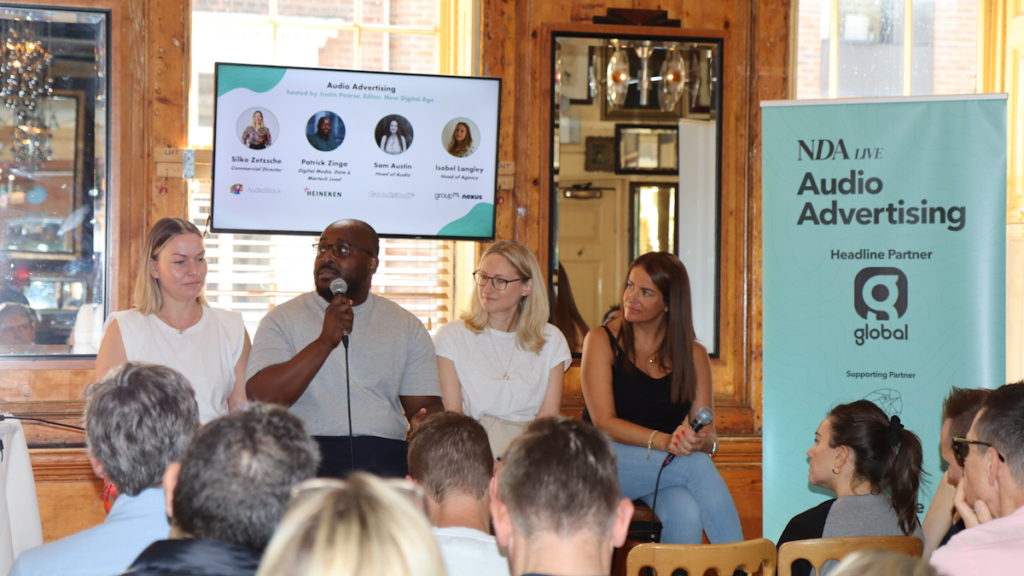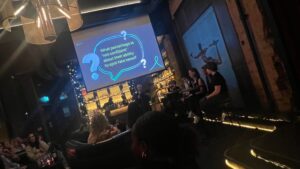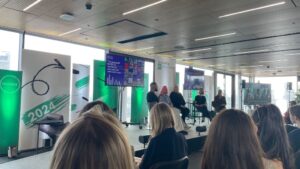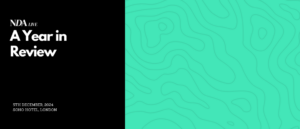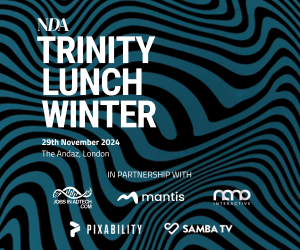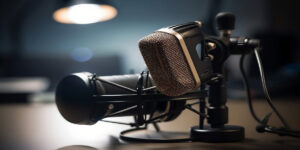Digital audio advertising spend, according to Statista, will reach £215.5 million in the UK this year. But, despite continuing to grow at a steady rate, it can often be overlooked for the “sexier” channels.
The first radio ad may have aired in the US more than a century ago, but it’s still a channel that’s more relevant than ever in the digital world. Add to that the growth of music streaming, podcasts, and now in-game audio advertising – and the fact that UK adults listen to an average of 16 hours of digital audio a week – and the opportunity for brands cannot be understated.
“You’ve got to take a step back from the actual advertising, because audio is really beneficial for the end consumer. We’ve heard all the positive impacts that it’s got on people’s mental health. There was a recent study done by Mind – when you listen to music, it increases dopamine in your brain by 9%. So, it’s good for you. It’s good for your mental health,” said Isobel Langley, Head of Agency at GroupM Nexus, speaking at the NDA Live: Audio Advertising event.
“It’s also enriching. People listen to podcasts to find out new information and to learn something, so it’s a really enriching environment for a consumer. Brands, don’t you want to be in that environment?”
While the audio space is the perfect place for brands to reach consumers and truly connect with them, there remain barriers preventing advertisers from fully embracing the medium – one of which being that marketers get far more satisfaction out of seeing their ads than hearing them.
“People like to see their ads. Brands want to see their ads on the out-of-home, they want to see it on the TV. From a shareholder perspective, it’s easy to sell – turn on the telly at this time and you can see it there – and they get a lot more kudos for it,” said Sam Austin, Head of Audio at Goodstuff.
“If an advertiser can embrace that difference and try to find who they sound like, what their sonic brand identity is, it disproportionately delivers more than just a video emotively.”
Alongside uncovering the sound of the brand, it’s important to take a “holistic audio approach,” according to Austin. One that places importance on podcasts, radio, streaming, and gaming, while also stepping out of the comfort of big cities to understand how people consume audio right across the country.
Audio dynamism
The emergence of technologies, such as artificial intelligence (AI), is making it easier for advertisers to not just approach the medium more holistically, but also decrease the time and cost associated with producing different audio ads for different audiences.
Dynamic creative optimisation (DCO) has now long been a part of the wider programmatic space but hasn’t managed to have the same buy-in within digital audio, holding back the medium.
“One of the reasons why DCO hasn’t taken off in the audio space is because of the paradox of the time it takes, how much it costs, and what you want to scale. If you want to have something quick, you can’t scale it. But if you want to scale creativity or your output, it will usually cost a lot and take a long time to produce. This is where technologies, such as artificial intelligence, in the production process come in,” said Silke Zetzsche, Global Commercial Director at AudioStack.
“Having the ability to quickly automate longer creative versions into shorter creative versions is an absolute game-changer, because you can now create thousands of assets within minutes in the same quality as the traditional audio production process.”
Dynamic audio creative is something that has been a focus for Heineken UK Digital Media, Data & Martech Lead Patrick Zinga’s teams at both his current brand and, previously, when he was agency side. And he’s seen it grow rapidly over that time.
“What we’re focusing on now is dynamic. Dynamic has definitely skyrocketed,” said Zinga. “I remember when I was agency side at Dentsu and we were looking at the concept of being able to put something forward in terms of one particular copy and having that spread out to be a lot more personalised to the individual, especially when it comes to accents and regionality. People trust what they see and hear if it sounds like them. And that worked wonders for us in terms of the different tests that we put forward.
“The addition of AI and being able to have that one voice that then gets translated, optimised, etc. on-the-go is definitely going to improve the capabilities of audio.”
The key message for advertisers, according to Zinga, is: “Seeing is believing, but hearing is trusting.”
NDA Live: Audio Advertising took place in London, with headline partner Global and panel partner AudioStack. Alongside our partners, speakers included Heineken, GroupM Nexus, and Goodstuff.
Coverage of Global’s keynote at the event can be found here.



